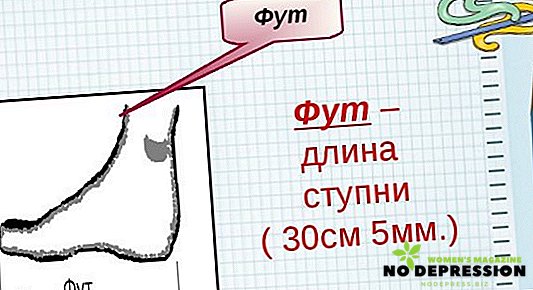The sun in the summer period makes us happy with its warmth, and not a single fashionista will refuse a beautiful bronze tan. However, some people may experience allergies from exposure to sunlight. Next, you will learn why an allergic reaction appears and what are the methods of dealing with it.

Allergy to the sun is manifested in the specific reaction of human skin to exposure to ultraviolet rays. In medicine, the disease is called photodermatitis or photodermatosis. According to statistics, about 20% of people suffer from this disease.
Why is there an allergy to the sun?
Undoubtedly, the rays of the sun are not an allergen. Why does allergy appear? Ultraviolet rays can provoke photodermatitis only when interacting with substances on the skin or inside them.
When photodermatitis occurs, the causes must be sought in the general condition of the body. Attention should be paid to the functioning of the kidneys and liver. Problems with the work of these organs appear on the skin.
Also, allergies can be triggered by medication, certain foods, the use of perfumes and creams.
The risk group for photodermatitis includes:
- white-skinned people - their skin is poorly protected from exposure to the sun, they are often exposed to sunburn;
- people with liver or kidney disease, as well as allergies;
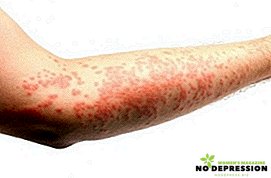
- children - the body is in the process of formation, and the skin is thin and vulnerable;
- pregnant girls - due to hormonal changes increased sensitivity to ultraviolet (pigment spots and erythema appear);
- people attending a tanning bed - skin reacts negatively to the influence of a large dose of ultraviolet rays;
- people with lots of tattoos.
Consequently, people whose skin is prone to developing photodermatosis should be attentive to their state of health and carefully select sunscreen.
What plants, drugs and foods can trigger allergies?
People who are prone to photodermatitis, before applying new cosmetic or medical products should carefully read the abstract and composition. If the description indicates that photodermatosis can occur, then you need to reduce the time spent in direct sunlight.
These substances may increase the symptoms of the disease.
The list of drugs that can cause allergies in rare cases:
- means for lowering the temperature - ibuprofen, piroxicam;
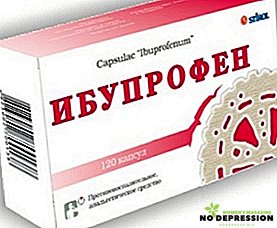
- antibiotics - sumamed, biseptol, nolitsin, doksitsilin, griseofulvin;
- hormonal contraceptive drugs;
- anti-allergy drugs - promethazine, diphenhydramine;
- drugs for the treatment of cardiovascular diseases - cordaron, digitoxin;
- sedatives - melipramine and doxipin.
Cosmetics, the composition of which can cause photodermatosis:
- perfume, lipstick, body cream with essential oils;
- sunscreen with a high content of PABK (para-aminobenzoic acid);
- antibacterial soap.
The cause of photodermatitis (namely, meadow dermatitis) may be meadow plants.
They secrete special substances (furocoumarins), which, settling on the skin of a person, interact with the sun's rays.
As a result, irritation and skin rashes may occur. These plants include:
- quinoa;
- nettle;
- borshevik;
- buckwheat;
- fig tree;
- fraxinella.

Also some foods may have a provocative effect:
- citrus fruits (orange, lemon);
- carrot juice;
- greens: parsley, dill, celery;
- alcohol;
- coffee, cocoa;
- chocolate;
- products with a high content of artificial additives.
Before going out in the sun, it is advisable not to use the products and medicines listed above. This is especially true of people prone to photodermatosis.

Types of photodermatitis
Allergies in the sun can cause different reactions:
- Phototraumatic reactions - this is the body's response to a long stay under the hot sun. Sunburns on the skin are possible. This reaction occurs when exposed to sunlight in the period from 11 to 16 hours;
- Phototoxic reactions - may occur in humans due to the medication or products that provoke photodermatitis;
- Photoallergic reactions are an abnormal reaction of the body to ultraviolet rays. Papules and vesicles appear on the skin. With this reaction, the skin can not appear in the sun during the day.
Of course, the sun's rays beneficially affect the human body, saturating it with vitamin D. However, in some cases, ultraviolet radiation can cause photodermatitis. In order to distinguish a conventional sunburn from an allergy, one should be familiar with the symptoms of photodermatitis.

How does sun allergy manifest in adults and children?
Symptoms of photodermatitis can be different and vary depending on the causes of allergies and the age of the person. However, the most common signs of photodermatitis are:
- reddening of the body parts affected by the sun's rays (most often the face, shoulders, arms);
- itching and skin rashes;
- severe burning in damaged areas of the skin;
- clear liquid bubbles and blisters;
- roughness and unevenness appear on the skin;
- in some cases, peelings and bleeding occur.
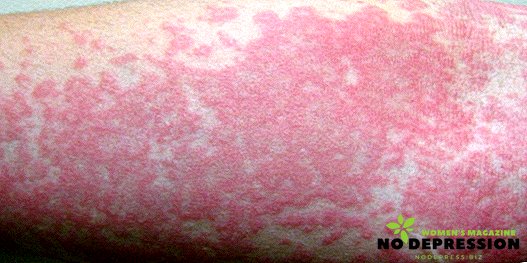
With photodermatitis in children, the general state of health can also deteriorate:
- a slight increase in body temperature;
- lacrimation;
- nasal congestion;
- swelling of the face.
First aid
At the first signs of allergy (the skin began to itch, and spots appeared), it is necessary to move into the shade or enter the ventilated room. Reddened skin should be covered with a damp cotton cloth.

It is advisable to make cold compresses of chamomile or calendula decoction. The victim is given a lot of cool liquid.
If there is an antihistamine available, then it can be taken with strong attacks (a child can be suprastinex or fexofenadine).
If possible, contact the nearest medical facility.
In case of severe photodermatosis (severe swelling, high fever), it is necessary to juicyly call an ambulance.
Diagnosis and treatment of a child allergic to the sun
Rashes on the skin of a child can be caused by various infectious diseases. Therefore, treatment begins only making sure that the baby is allergic to the sun.
A qualified doctor will prescribe an appointment for blood and urine tests. Then do a light test. Small areas of the body are irradiated with ultraviolet light for a few minutes and look at the skin's reaction. If the doctor doubts the diagnosis of photodermatitis, an analysis of scraping off the skin is prescribed.
When the diagnosis is confirmed by a doctor, the complex treatment of photodermatosis begins.
Apply external means to soothe the skin:
- Bepanten cream;
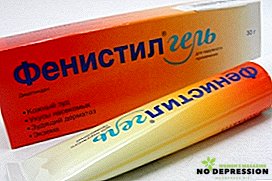
- La Cree cream;
- Fenistil cream;
- Gistan;
- Panthenol Cream;
- Advantan;
- Desitin.
Prescribe the reception of antihistamines:
- Suprastin;
- Diazolin;
- Phenystyle;
- Zyrtec

Further, products with a high content of preservatives and dyes are removed from the diet. At the time of therapy exclude the ingestion of allergenic products (citrus fruits, strawberries, nuts, honey, fish).
When bathing use the usual children's soap. They dress the child in closed clothes before going out in the sun during the day and strengthen the child’s immune system.
The duration of treatment and the final result depends on how much the parents of the child understand the importance of the problem. Otherwise, therapy will be delayed for a long time and will lead to complications in the health of the baby.
What treatment is provided for adults
Photodermatitis in adults also requires adequate medical treatment. After all, to avoid the influence of ultraviolet rays in the warm season is almost unreal. For this reason, we need consultations of doctors: a dermatologist and an allergist.
If there are pathologies in the work of the internal organs, the necessary therapy is prescribed. At the same time, treatment is underway aimed at eliminating the external manifestations of allergy. As a rule, the doctor prescribes the use of the following drugs.
Allergy creams:
- Desitin;
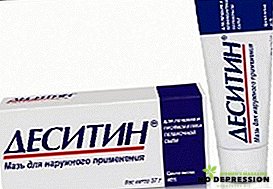
- Fenistil gel;
- Radevit;
- Dexpanthenol;
- Elidel and others;
Antihistamine preparations:
- Claritin;
- Tavegil;
- Suprastin;
- Tsetrin;
- Zodak;
Vitamins:
- WITH;
- E;
- Group B.
The duration of photodermatosis therapy can vary from a couple of days to several weeks. It depends on the severity of the disease and the adequacy of the prescribed treatment.

Traditional medicine as an assistant in the treatment of allergies
If you experience symptoms of photodermatitis and the inability to consult a doctor, you can try traditional medicine:
- Compress of grated cucumber, potatoes or cabbage applied to the affected areas of the body for 35-40 minutes;
- Broth wormwood wipe the rash on the skin;
- Take a bath, adding infusion of celandine;
- Cold compress from the infusion of calendula;

- Compresses from baking soda. It is necessary to dilute 1 teaspoon of soda in 100 ml of water and make lotions;
- Take celery juice several times a day for a teaspoon;
- Compresses of burdock root;
- Apply the bath of Hercules. It is necessary to pour boiling water 400 grams of oatmeal and leave the mixture for 10 minutes. Next, add the composition to a warm bath.
Folk remedies have a cooling and anti-inflammatory effect. However, as soon as possible, you should consult a doctor.
Tips and precautions
It is naturally impossible to exclude the effect of sunlight on human skin. But it is quite possible to reduce the likelihood of photodermatosis by following these tips:
- Before leaving the house (half an hour), a sunscreen spray should be applied to the skin;
- People who are prone to allergies to the sun, it is better not to use perfumes, essential oils and deodorants in the summer;
- When resting near the water after bathing, you should wipe the skin with a towel from moisture;
- If you are prone to photodermatitis in the hot period, you should start taking antihistamines in advance;
- In the summer it is necessary to take vitamin complexes;
- With light and sensitive skin, direct exposure to the sun should be avoided, relaxing in the shade on the beach;
- On vacation, it is better to sunbathe before 11 am and after 4 pm.
If you follow all precautions, then being in the sun will turn into joy without irritation and allergic reactions.
For more information about allergy to sunlight, see the following video.

















